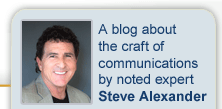Micromanaging: Check your ego at the door!
A common issue in my work with boards and chief executives is the challenge of micromanaging. It’s something that happens as well with parents, supervisors, co-workers, peers and others. What’s at the root of it all and how do we know when it’s happening? Truth be told, micromanagers are often aware of what they’re doing; like any addictive behavior, they just can’t seem to help themselves!
If you’re a micromanager, ask yourself what the underlying emotion is that drives the behavior. Using the ‘think, feel and do’ exercise from an earlier post, call a meeting with yourself. How we act is more a result of what we feel rather than what we think. If we’re ‘feeling’ frustrated, for example or overwhelmed and out of control, we’re more likely to ‘think’ we can ‘do’ something about the little things, and sometimes even the big ones, however, these are not often the important things.
So, we ‘manage’ the details instead of stepping back, recognizing what’s really going on…and most importantly, and letting go. Empowering, rather than managing, others.
We all have our tell-tale signs. I bet if you take that meeting with yourself, you’ll be able to write down a few of yours.
And if you’re the one being micromanaged, remember, it’s not about you! Work with your supervisor, board, spouse, parent and ask the more critical question: What is the result or outcome we need in this situation? Then, when you’ve created clarity about that, encourage the micromanager to empower you to come up with some acceptable solutions (not how you get there and myriad of details along the way!) and offer an agreeable timeline for delivering results.
Let me know how it goes next time you experiment with your new behavior!




